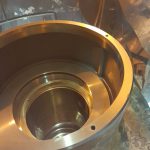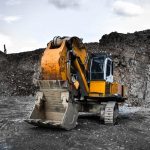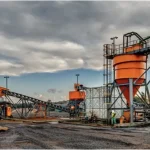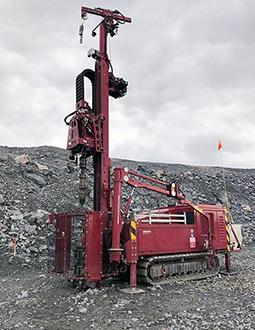In the drilling industry there are many techniques and equipment that have been used over the years to conduct drilling operations, but one of the more exciting and innovative pieces of equipment has been the sonic drilling rig.
What Is Sonic Drilling?
Sonic drilling is a more efficient method of drilling by using high-frequency resonance to create a smoother path of travel for the drill by reducing or even eliminating any frictional resistance from subsurface materials being encountered.
The high frequency resonance results in a vibrating head that is being both pushed up and down by the mechanism, rotated via the drill string and vibrating because of the high frequency resonance; creating a powerful force to displace subsurface materials and to reach the operator’s objective.
Superior Samples
Because of this incredible design, the core samples that are produced as a result of sonic drilling are far superior to samples provided by other drilling methods.
An undisturbed, quality, sample is possible due to an innovative advanced casing system that can capture the sample and maintain its integrity with as little as 1% deviation as opposed to other comparative methods such as a standard rotary drilling rig.
When the sonic head is active and drilling through the subsurface materials, it liquidises any loose soil and can reduce any rock or harder material to a fine dust, meaning there is up to 80% less waste compared with a standard rotary drill as the waste can be confined to the original hole and later returned to its original state.
How Does Sonic Drilling Work?
A sonic drilling rig is unique in contrast to a standard rotary drill due to the sonic head at the helm of the rig. Within this sonic head are two rotating counterweights that produce a large amount of vibratory force, which becomes the resonance energy needed for the sonic drill to penetrate subsurface materials.
The energy from the two counterweights is projected vertically down the drill string which causes it to rotate within the head. This resonance energy is evenly distributed to the sonic head, creating the sonic drilling effect that allows more efficient and effective drilling.
To maintain the integrity of the sample, a casing is advanced over the core barrel, closing off the sample and protecting it as the core barrel can then be retracted and the sample received with little mess and excellent quality.
Uses Of Sonic Drilling Technologies
There are many applications for sonic drilling technologies, one of the primary use cases being for geotechnical site investigations. Due to the low waste and high-quality yield of a sonic drilling rig, it is the ideal solution for any environmentally sensitive product to reduce any impact on the environment due to a geotechnical investigation.
On an ecologically sensitive site, the efficiency of a sonic drill cannot be flawed due to its on average 400% quicker yield time compared with a sonic drill, allowing for a short drilling session to reduce impact on the surrounding area.
In the construction environment, a sonic drill can be an incredibly powerful piece of equipment on projects such as bridges and dams to ensure the structural integrity of such important structures.
By using the advanced casing system, once the investigation is complete the integrity of the site is still maintained as the casing remains as a placeholder to prevent any collapses of the subsurface structures.
It is even possible for the sonic drill to penetrate traditionally tough materials such as limestone and dolomite, which usually pose a threat to standard rotary drills due to their geological qualities.
Versatility of Sonic Drilling
Being flexible is something that is required when conducting site investigations as the situation can always be challenging, which is why sonic drilling rigs can be adapted to fit different circumstances.
A number of rigs can be fitted with caterpillar tracks, allowing them to be moved into position by an operator without the need for more heavy vehicles to pollute the site.
There are also smaller sonic drilling rigs that can be interchanged depending on site conditions, which can all be planned with a preliminary site inspection to ensure the right tools are being used to deliver the best results possible.
Because sonic drilling can be done without fluid or air, it is often used for things such as earthen embankments where it is not possible to use traditional methods, giving it a wider range of uses outside of the commercial industry.
When the sonic drilling equipment has been laid out on site and prepared for use, the core barrel penetrates first with the sonic head attached to begin drilling into the subsurface material. Once you’ve reached the desired depth to retrieve a sample, the casing can then be inserted over the core barrel to capture the sample.
It is best to complete this dry without the use of water to displace any materials so as to preserve the material as best as possible and prevent any contamination of the sample with the mistake of groundwater being present.
Upon retrieving the core sample, it can be extracted from the sonic drilling rig to be placed in a dry and secure container for any geological examination that may be required by surveyors.
If the circumstances require that just a borehole is needed, the samples can be extracted through the core barrel and disposed of appropriately with minimal waste, and the casing advanced over the core barrel can be left for the borehole installation.
If challenged with harder materials such as bedrock, sonic drilling can still penetrate these harder materials with excellent efficiency compared to the more traditional rivals, making it a truly more effective and worthwhile technology to deploy.















